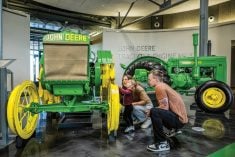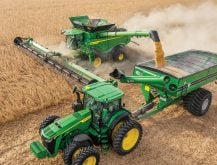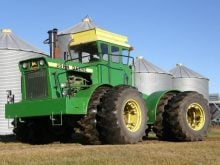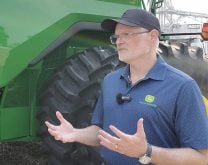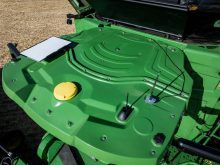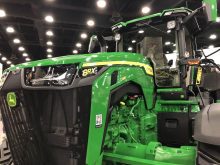One of the most difficult things for producers who use liquid manure to aid in field fertility is determining what level of nutrients is actually being applied. John Deere’s HarvestLab 3000 can now provide a real-time analysis of applied manure and allow operators to even out application rates.
Deere introduced the HarvestLab 3000 back in 2017, but this year it added the manure analysis feature here.
“The HarvestLab has been out for a little while, so you’ve been able to use it as a desktop forage analyzer,” says Patrick Dougherty, product manager at Deere’s Intelligent Solutions Group. “You’ve been able to use it on the auger of the self-propelled forage harvester for nutrient analysis and mapping, but we just released the capability in North America for manure constituent sensing. So you can document the nutrient metrics on that and send it over to the Operations Centre. So you can put that into account and make sure your nutrient plan is right on.”
Read Also

Claas brings 1000 Series SP forage harvesters to Canada
In mid-August, Claas unveiled its new line of Jaguar forage harvesters at an event in Visalia, California, deep in the heart of that state’s dairy region.
When the HarvestLab 3000 is used on a liquid fertilizer tanker, it can adjust the flow rates as measured nutrient levels fluctuate. That creates a much more even application across a field.
“It really brings a lot of the technologies together,” adds Dougherty. “So not only does it control flow, but with John Deere tractors it will actually change the speed to make sure those rates are where you set them at.”
According to Deere, the HarvestLab 3000 uses Near-Infrared Spectroscopy (NIRS) to evaluate a variety of nutrient characteristics such as moisture, dry matter, protein, starch, neutral detergent fiber (NDF) or acid detergent fiber (ADF). In the field, broader light spectrum measures up to 10 nutrient values 4,000 times per second, providing permanent, real-time data gathering.




